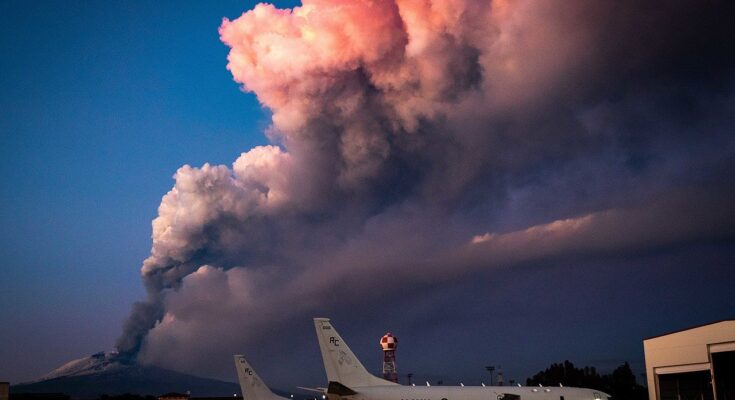Eruptions at Italy’s Mount Etna and the smaller Stromboli volcano spewed hot ash and lava, raising alert levels on the Mediterranean island of Sicily and forcing a temporary shutdown of Catania Airport on Friday.
Etna, one of the world’s most active volcanoes, has seen intense activity in recent days, lighting up the sky near the city of Catania, while Stromboli off the northern Sicilian coast has spilled lava into the sea.
Online videos capture the dramatic sight of lava erupting from Etna’s volcano’s largest crater, known as the Voragine Crater. It’s the first time that this crater has been active in four years.
Cloud from the Etna Volcano eruption could reach 4,500 meters
According to reports from the Italian state geological service (INGV), the volcanic cloud is expected to reach a staggering height of 4,500 meters. The Department of Civil Protection has promptly adjusted the alert level for Mount Etna from green to yellow.
The last major eruption at Etna was in 2021 generating an ash plume that quickly rose to an altitude of almost 15,000 feet (4,500 meters).
The smog or vog (volcanic smog), a visible haze comprised of gas and an aerosol of tiny particles and acidic droplets created when sulfur dioxide (SO2) and other gases emitted from the volcano, reached Greece.
Italy’s civil protection agency issued its top, red alert for Stromboli, warning the situation could deteriorate.
Civil Protection Minister Nello Musumeci said Stromboli was “under surveillance”, adding that authorities were making sure evacuation plans were ready in case of emergency.
According to The Associated Press, the fire brigade said they had preemptively doubled the number of firefighters on the island.
Around Catania, on the eastern coast of Sicily, residents and authorities moved to clean up the city after streets and cars were left smothered in black volcanic ash, while the nearby airport was closed.
Europe’s highest volcano, Etna, covers an area of over 1,200 square kilometers and remains one of the world’s most active volcanoes. Its documented history of eruptions dates back to 425 BC.
Scientists warn that Etna may create a tsunami
Recently, as reported by Greek Reporter, scientists have warned that Mount Etna is slipping eastwards into the sea and could trigger a catastrophic tsunami.
Scientists are concerned the slow movements that have been measured on Mount Etna’s southeastern flank could escalate and result in part of it collapsing into the Mediterranean.
Such an event would put Sicily and the Ionian Sea at risk, as debris enters the water, possibly causing devastating waves.
However, researchers monitoring the site say all they can do for now is “keep an eye” on the active volcano as there is no way of telling whether this acceleration will come within years or centuries.



